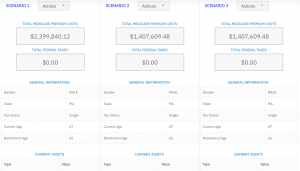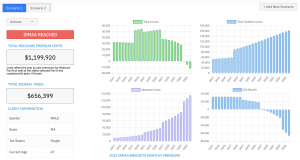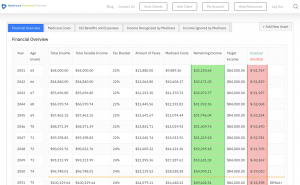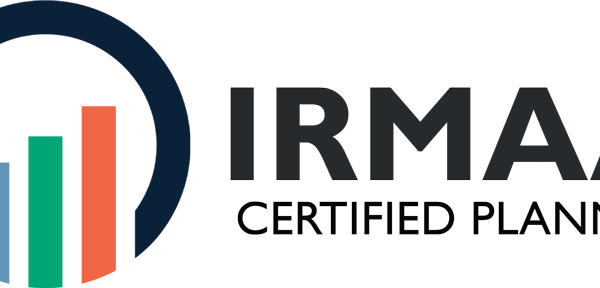Imagine, you’ve just clocked in your last hour at work. You’re ready to leave the working life behind and savor the rewards of your efforts. But then, there’s a sudden shift – whispers about the social security earnings limit 2023.
You think, “I’ve worked my whole life for this moment! I deserve every penny.” Well… that’s where things get interesting.
Navigating retirement isn’t as simple as kicking back on a beach somewhere. It’s like stepping into an intricate dance with Uncle Sam – one wrong move and you could be leaving money on the table.
This post is your dance guide; helping ensure each step towards maximizing your Social Security benefits is right in rhythm with the rules set by our friends over at SSA (Social Security Administration).
Are you ready? Let’s delve into understanding how these limits impact retirees and explore various strategies.
Understanding the Social Security Earnings Limit 2023
If you’re eyeing retirement in 2023, knowing your Social Security earnings limit is key. This limit, set by the Social Security Administration, dictates how much income you can earn without impacting your social security benefits.
The annual earnings limit for individuals not yet at full retirement age is $21,240. That means if you haven’t reached that magic age but still want to work part-time or even full-time while receiving social security, keep an eye on those paychecks. For every $2 earned above this amount, expect a reduction of $1 from your benefit payment.
But what about folks reaching their golden years? They get a bit more wiggle room. The earning ceiling increases to $56,520 in the year they reach full retirement age and deductions occur only after surpassing this threshold – with one dollar deducted for each three dollars earned over it until hitting that all-important birthday.
To better understand these reductions and plan ahead financially, check out this helpful guide provided by SSA detailing how work affects benefits.
Deductions Don’t Spell Doom.
You might be thinking: “Wait up. Does exceeding my yearly earnings limit mean I’m kissing goodbye to my hard-earned bucks?” Not necessarily so. It’s important to note that any deduction made due to excess earnings isn’t lost forever. Once you hit full retirement age (FRA), there’s good news as no matter how high your annual income may climb – skies are truly limitless here – it will no longer reduce those precious monthly payments.
A Silver Lining
Furthermore, if you have been working while receiving social security benefits and your latest year of earnings turns out to be one of your highest years, there’s a silver lining. The Social Security Administration will recalculate and potentially increase your retirement benefits.
retirement. Getting to grips with the Social Security Earnings Limit for 2023 might feel like a bit of a maze, but it’s just one more step on your journey towards smooth and stress-free retirement days.
Key Takeaway:
Eyeing retirement in 2023? Remember, the Social Security earnings limit is crucial. If you’re under full retirement age and earn more than $21,240 annually, expect a $1 reduction from your benefit payment for every extra $2 earned. But don’t fret. These deductions aren’t lost forever – they stop once you hit full retirement age, no matter what.
How the Social Security Earnings Limit Works
If you’re nearing retirement, understanding the social security earnings limit is crucial. This limit is set by the Social Security Administration (SSA), and it determines how much money you can earn before your benefits are affected.
Deductions from Benefit Payments
Earning above these limits can lead to deductions from your Social Security benefits. But here’s an interesting twist – not all income affects your benefits in this way.
The SSA applies a test, known as the “earnings test,” to determine if and how much of your benefit should be withheld based on what you earn. For individuals younger than full retirement age who have earnings over $21,240 in 2023, they’ll see their monthly checks reduced: for every extra $2 earned above this threshold, there’s a deduction of $1 off their benefit payments.
Things shift slightly for those reaching full retirement age within that year but aren’t yet at their birthday month. In such cases where one earns more than $56,520 annually – remember we’re still talking about 2023 figures here – there’s a reduction of only $1 for each additional $3 earned until hitting full retirement age during that same year. Check out How Work Affects Your Benefits for detailed insights on this topic.
You might now ask: Does any increase in my earnings result in less take-home pay overall? Well surprisingly no. The math works out so that despite these reductions due to excess earnings under social security rules; often, the total income (wages plus social security benefits) is higher than it would be without that extra work. You can still enjoy the benefits of your hard work, even if it means a slight reduction in Social Security benefits.
Ya might be pleasantly astounded. If you’ve seen some of your benefits held back due to these rules while under full retirement age, don’t worry. When you reach that golden milestone of full retirement, things may just start looking up.
Key Takeaway:
Understanding the social security earnings limit is crucial, especially if you’re nearing retirement. This limit, established by SSA, affects your benefits depending on how much money you make. If you exceed this threshold – $21,240 for those under full retirement age in 2023 – be prepared to see a decrease in your monthly payments. But there’s no need to worry. Despite potential reductions due to additional income,
Impact of Earnings on Social Security Benefits Recalculation
Your latest year of earnings can have a significant effect on your Social Security benefits. The SSA may possibly raise your retirement pay-out, depending on the most recent year of wages.
The SSA uses your highest 35 years of earnings to calculate your initial retirement benefit. If you’re still working while receiving social security, and you make more in a current year than in one or more of those 35 years, SSA will substitute that higher figure into its calculations.
This could result in an increased monthly benefit amount for both retirees who are below their full retirement age as well as those who have reached it but continue to work. The important thing to remember here is that the yearly limit doesn’t apply once you reach full retirement age – this opens up the possibility for higher lifetime benefits.
Understanding Benefit Recalculation
If any part of this seems confusing, don’t worry. Let’s break it down with some real-world numbers using our handy Earnings Test Calculator.
Let’s say Bob turned 62 last January and filed for his social security benefits starting February. He expected to earn $25,000 during the rest of the year which was above his annual exempt amount since he hadn’t reached his full retirement age yet.
Bob would then be subject to deductions from his benefits due excess earnings ($1 deducted for every $2 earned over). But let’s suppose by December Bob actually ended up earning significantly more – about $45,000.
In such case, come next September when SSA reviews records they see Bob had a higher income during one out those crucial ‘highest-earning’ 35 years. The SSA then recalculates his monthly benefit and Bob will see a little more in his social security check from October onwards.
So, despite initial deductions due to earning over the limit, there’s potential for an increase in your retirement benefits based on that higher income – it’s all part of SSA’s mission to ensure you receive the highest possible amount of benefits over your lifetime.
Key Takeaway:
It’s possible to increase your Social Security benefits by working. The SSA recalculates retirement pay, focusing on the highest 35 years of earnings. If you’re making more money now compared to some previous years, they’ll use this higher figure instead. This can lead to a bigger monthly check – even if there were initial deductions because you went over the annual limit before.
Exceptions and Special Rules Applying to the Earnings Limit
Retirement planning is like trying to navigate a maze. Navigating the retirement planning maze can be much easier when you know about special rules. Let’s shed some light on two exceptions related to Social Security benefits: the special rule for retirement benefits and how earnings limits apply if you’re self-employed.
Special Rule for Retirement Benefits
The Earnings Test Calculator, your trusty GPS in this financial journey, has something intriguing tucked away. A little-known provision allows retirees considered ‘retired’ during any month of their latest year, regardless of yearly earnings. Surprising? Yes.
In other words, even if your annual income crosses over $1,770 every month or if you’re performing substantial services in self-employment – don’t panic. The monthly limit shoots up drastically; it’s as high as $4,710 per month.
Ain’t that an unexpected twist? It’s almost like finding a hidden treasure chest right at home (the retirement equivalent). No longer do those excess dollars needlessly strip away from your full social security benefit pay.
Earnings Limit and Self-Employment
Moving onto another road less travelled – let’s discuss what happens with our entrepreneur friends out there engaged heavily in substantial services via self-employment.
You see here too lies an exception – not all work counts equally under these “earnings tests.” In fact only certain kinds of employment are considered “substantial” enough by Uncle Sam (talk about being picky.).
So whether you’re tilling fields or tinkering gadgets from sunrise till sundown might make a difference after all. For self-employed individuals, the rules of this game are indeed different.
Just like an unpredictable road trip full of detours and surprises, your retirement journey too has its own twists and turns. But don’t worry – we’re here to help you navigate through these special provisions and exceptions so that no pothole or speed bump catches you off guard.
Key Takeaway:
Retirement planning may seem like a maze, but understanding special rules can turn it into a walk in the park. For instance, retirees considered ‘retired’ during any month of their latest year aren’t affected by yearly earnings limits – a boon that could feel like finding hidden treasure. Additionally, self-employed individuals should note that not all work counts equally under these rules. This means if you’re self-employed, it’s essential to understand how your income affects your retirement benefits.
Types of Income Considered for Benefit Deductions
The SSA evaluates particular types of revenue to decide if you’ve exceeded the remuneration limit. But not all money coming in counts against your benefits.
Count wages and net profit from self-employment, these are the main sources of income that SSA takes into account. It’s like a magnifying glass, zooming in on just this part of your financial picture.
If you’re clocking hours at a job or reaping profits from your own business venture, then yes – those numbers go straight onto SSA’s ledger. Think about it as walking through an automatic door: once you step over the threshold with either wages or self-employment net profit, deductions start happening to your benefit pay.
Differentiating Between Countable and Non-countable Income
We’ve talked about what does count; let’s flip that coin now and talk about what doesn’t count towards Social Security earnings limits.
Pensions, annuities, investment income—none of them cause ripples in your social security pond. If pensions were people strolling past a shop window without going inside – they catch SSA’s attention but don’t actually change anything inside (your benefits).
The IRS might tax them, but when it comes to deciding whether there will be deductions made from monthly payments by the administration due to surpassing earning limits–they get sidelined.
No Impact Retirement Benefits On Earnings Limit?
A big surprise? Other retirement benefits also stay out of this particular limelight. Just because two kids share DNA doesn’t mean they always hang out together—the same goes for retirement benefits and social security earnings limits. They may be part of the same family (your overall financial picture), but they don’t always interact.
It’s like having a basket of assorted fruits, with apples standing for income from work or self-employment and oranges signifying pensions, annuities, and other investments. Only the apples – which represent wages from a job or net profit from self-employment – get counted for benefit deductions. On the other hand, the oranges symbolize pensions, annuities, and investment income.
Key Takeaway:
The Social Security Administration (SSA) only counts certain income types when determining if you’ve exceeded the earnings limit. Mainly, wages and net profits from self-employment will be on their radar. But don’t sweat it – pensions, annuities, investment income and other retirement benefits won’t stir your social security waters. Think of it like a fruit basket; only some fruits are counted while others are just there to make the basket more appealing.
Maximizing Your Social Security Benefits Amidst Earnings Limit
You’ve worked hard all your life, and now it’s time to enjoy the fruits of your labor. But wait. You need to navigate the tricky waters of social security benefits amidst earnings limits.
The key is planning ahead and understanding how the Social Security Administration (SSA) works. For instance, did you know that there are special rules for retirement benefits?
Making Sense of Deductions from Benefit Payments
Earning above set limits can lead to deductions from your social security checks. For every $2 earned over the annual limit before full retirement age, $1 is deducted from benefit payments.
This might seem harsh but hold on. The SSA isn’t out to get you – they have a silver lining up their sleeve. If you reach full retirement age within 2023, only $1 gets deducted for each extra $3 earned until hitting that golden mark.
Squeeze Out Every Cent: Recalculation Can Be Your Friend
Your latest year of earnings could be an unexpected boon in disguise because if it’s one among your highest earning years, SSA may recalculate and potentially increase your benefits.
Bend The Rules To Your Advantage: Special Rule & Self-Employment Insights
A unique provision allows retirees who surpass their yearly income threshold still receive full benefits during any month considered as retired despite exceeding their annual limit—a lifesaver when budgeting becomes tight.
- If self-employed? Even better news awaits; earn more than expected or provide substantial services without fearing benefit cuts thanks to a monthly earnings test calculator tailored just for entrepreneurs like yourself.
Deciphering the Code: Types of Income Considered
The SSA is not a big bad wolf, after all. They’re fair and consider only wages from your job or net profits if you’re self-employed when calculating benefit deductions. Pensions, annuities, investment income – none of these factor in.
We’re all players in this financial chess game. Each move matters, each decision carries weight. It’s about strategy and foresight.
Key Takeaway:
Ready to maximize your Social Security benefits in 2023? It’s all about strategy and foresight. Plan ahead, understand how deductions work if you’re earning above the limit, and don’t forget: SSA might increase your benefits based on high-earning years. If retired or self-employed, special rules can help protect those precious payouts. And remember – only jobs that contribute to Social Security will count towards these benefits.
Planning Ahead with the 2023 Social Security Earnings Limit
The Social Security earnings limit for 2023 is a critical factor to consider in your retirement planning. Whether you’re receiving social security or anticipating your future benefits, understanding these limits can help maximize what you receive.
Your annual earnings directly influence how much of your benefit pay might be withheld due to the earnings test. The yearly limit for those younger than full retirement age is $21,240. Earn above this, and deductions kick in: one dollar off your benefits for every two dollars earned over the threshold.
If you reach full retirement age within 2023 but haven’t hit it yet by year’s end, there’s a different cap—$56,520—with steeper reductions: three bucks docked from benefits per extra dollar earned until reaching that magic birthday. Here’s more on how work affects Social Security payments.
Navigating Your Benefits Amidst Limits
You’ve got options when managing these restrictions. One strategy involves coordinating income sources strategically—for example, using other savings early in retirement while delaying taking social security until later could result in higher monthly checks down the line.
A particularly handy tool here? The Earnings Test Calculator. Plug-in some figures and see firsthand potential impacts on your individual situation. Don’t forget; only job wages or net profits from self-employment count towards these calculations.
Making Sense of Special Rules & Exceptions
The rules around earnings limits have exceptions worth noting too. For instance, there’s a special rule letting retirees get full benefits for any month they’re considered retired, regardless of annual earnings. Then there’s self-employment: if you expect to earn over $1,770 every month or perform substantial services in your business, the monthly limit is $4,710.
These specifics can seem complex but remember—knowledge is power. So arm yourself with information and plan wisely to ensure a comfortable retirement ahead.
Key Takeaway:
For those of you who are nearing full retirement in 2023 but aren’t quite there yet, the earnings cap is higher at $56,520. But watch out – steeper reductions may apply if your earnings exceed this limit. To make sense of these rules and figure out how they could affect your Social Security benefits, try using tools like the Earnings Test Calculator.
FAQs in Relation to Social Security Earnings Limit 2023
How much money can I make without affecting my Social Security in 2024?
The exact amount will be announced by the Social Security Administration later. In 2023, it’s $21,240 for those under full retirement age.
How much can I earn while on Social Security in 2023?
If you’re younger than full retirement age during all of 2023, you can earn up to $19,560 before your benefits are reduced.
What is the Social Security cap wages for 2023?
In 2023, the maximum taxable earnings cap is set at $147,000. Earnings above this limit aren’t subject to social security taxes.
How much of my Social Security income is taxable in 2025?
The percentage varies based on total income and filing status. Up to a max of about half (50%) could be taxed if other income levels are high enough.
Conclusion
Understanding the dance of retirement is crucial. The social security earnings limit 2023 isn’t a foe, but a partner to be mastered.
We’ve learned about the rules, from deductions for exceeding limits to exceptions and special rules that may let us keep more benefits in our pocket.
You now know which types of income are considered for benefit deductions. You also understand how earning above set limits can impact your social security check.
The journey doesn’t stop here though. Keep exploring strategies and planning ahead considering these limits; they’ll help you navigate your retirement finances smoothly!
Table of Contents:
- Understanding the Social Security Earnings Limit 2023
- How the Social Security Earnings Limit Works
- Impact of Earnings on Social Security Benefits Recalculation
- Exceptions and Special Rules Applying to the Earnings Limit
- Types of Income Considered for Benefit Deductions
- Maximizing Your Social Security Benefits Amidst Earnings Limit
- Planning Ahead with the 2023 Social Security Earnings Limit
- FAQs in Relation to Social Security Earnings Limit 2023
- Conclusion
Streamlining the Medicare Surcharge Calculation Process.
Our Healthcare Retirement Planner software is designed to streamline the retirement planning process for financial professionals. By providing an efficient way to calculate IRMAA costs, our tool helps you save time and focus on other aspects of your clients’ retirement plans.
- Faster calculations: Our software quickly calculates IRMAA costs based on your client’s income and tax filing status, eliminating manual calculations and potential errors.
- User-friendly interface: The intuitive design of our platform makes it easy for financial professionals to input data and generate results with minimal effort.
- Data integration: Seamlessly integrate our calculator into your existing financial planning tools or CRM systems for a more streamlined workflow.
- Easy to Understand Reports: Export reports to easily share with your clients
- Tax and Surcharge Modeling: see how different types of income affects both taxes and your surcharges.
In addition to simplifying the calculation process, using our Healthcare Retirement Planner can also help improve communication between you and your clients. With clear visuals that illustrate how IRMAA costs impact their overall retirement plan, you can effectively convey complex information in an easily digestible format. This enables clients to make informed decisions about their healthcare expenses during retirement while ensuring they are prepared for any potential changes in Medicare premiums due to income fluctuations. To learn more about how our software can benefit both you as a financial professional and your clients’ retirement planning experience, visit the features page. Streamlining retirement planning processes can help financial professionals save time and resources, allowing them to focus on other areas of their clients’ needs. Automated calculation of IRMAA costs is the next step in streamlining this process even further.





